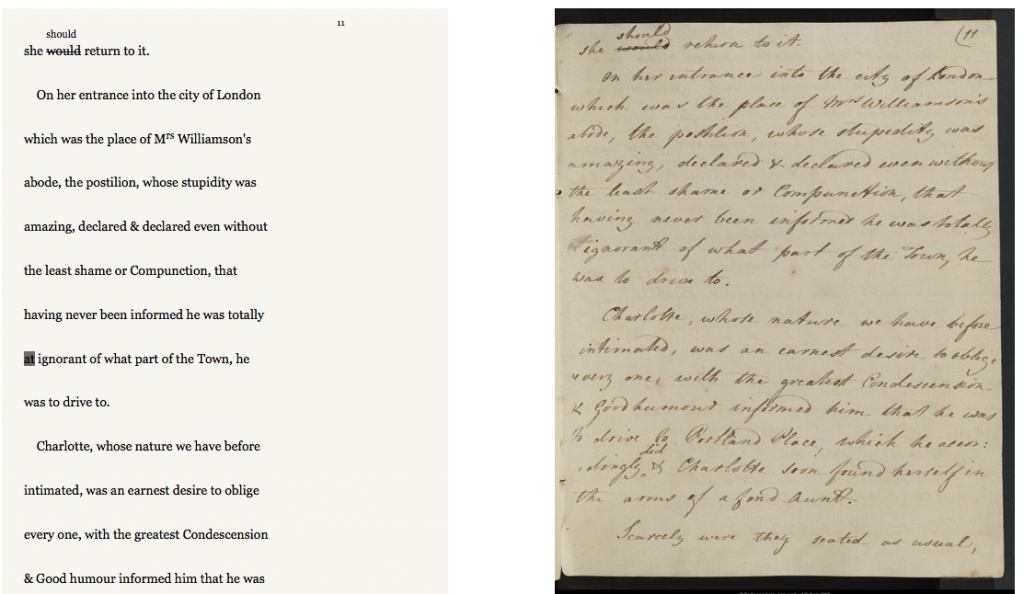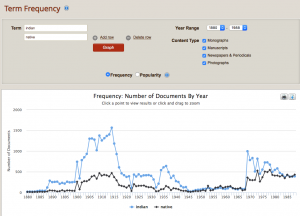As our overall understanding of modern technology progresses, so does the potential of Digital Humanities. One of the main advantages of Digital Humanities is that these archival documents can be processed onto a digital library, where they can be easily accessible from all over the world. Somebody can be continents away, and still be able to read the manuscript of Jane Austen. Another major advantage of creating a digital artifact from archival documents is that finding individual words or sections is made extremely easier and more convenient. This could help better process all of the messages that the specific author was trying to convey in his/her work or manuscript.
There are few disadvantages to creating a digital artifact from archival documents. In my opinion, the rarity of these documents that have been preserved for hundreds of years is significantly decreased when this digital transfer happens. These documents are now easily accessible, and thus lose part of their historical importance .With the digital version of the manuscript, one would be missing so much of the actual piece. Mainly, the digital transfer impedes on the aesthetic of the documents.
As I explored the Moravian Lives projects, I found it shared quite a few similarities with other large-scale DH Projects. I found out that along with these other projects, Moravian Lives heavily relies on crowdsourcing to keep it running. Many people contribute to help trace the history of the Moravian Church.

I believe we are interacting with the textual material more on the screen than on the page. In the age of digital humanities, the physical interaction with the textual material is primarily composed of transcribing it to digital format. There are not really efficient ways to analyze the material when it is presented as one long, physical manuscript. We are interacting a lot more with the material on the screen than on paper. With all of the material digitized, it makes it easier for us to analyze the text based on word usage (find the prevalence of a specific word with respect to each author) or find a certain part of the manuscript without having to read through the entire thing first. Our research practices are changing to involve more textual analysis than anything, and this allows us to make useful diagrams such as word maps or frequency charts.
Open-source and free digitized materials offer unbounded pedagogical opportunities. After doing a little bit of research, I found a website called DIRT, which is a registry of digital research tools for scholarly use. It provided an extensive list of downloadable programs for about forty or so different digital research techniques that could range from analyzing data relationships to even transcribing manuscripts!. DIRT is a public domain website, so student are able to use this for all of their digital humanities needs.The opportunities are seemingly endless in that there are so many different sources. For example, when I clicked “analysis”, there were at least one hundred different websites or programs that were provided. According to Whitley, this allows for “distant reading”. The data can be analyzed better because more connections are being established.

I believe that instead of supplanting our need to view the physical originals, digitized materials enhance the necessity and desire for archival work. Whitley explained how digital tools can help create more questions, which could result in a more complex look into the data. The realm of humanities has never been more excited than in this digital era. With digital humanities, we can now process manuscripts and data with more efficiency than we ever have in all humanity. This makes the necessity of archival work at an all time peak, because we have gained the ability to ubiquitously transcribe and analyze documents that were previously untouched and unmarked. The significance of humanities right now is at an all time high, and the more crowdsourcing we can get working on it, the more we’ll really be able to analyze all those who came before us!
I am a sophomore at Bucknell University, majoring in Mathematical Economics and minoring in Computer Science.

